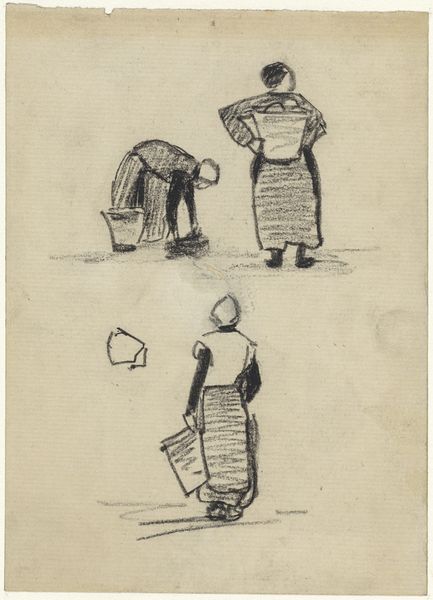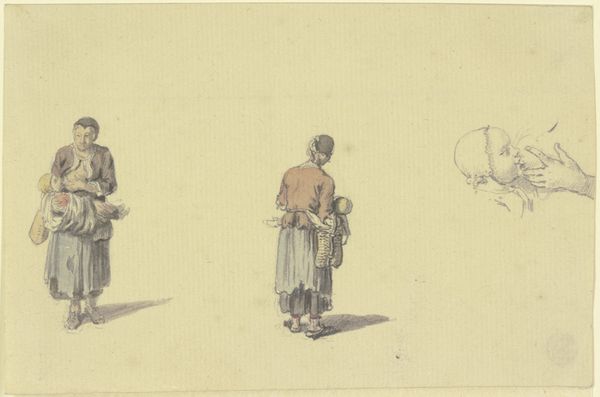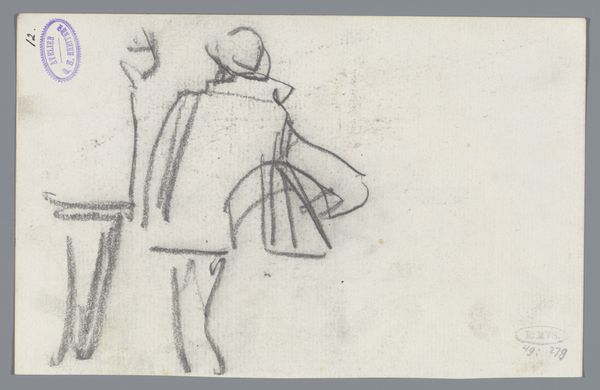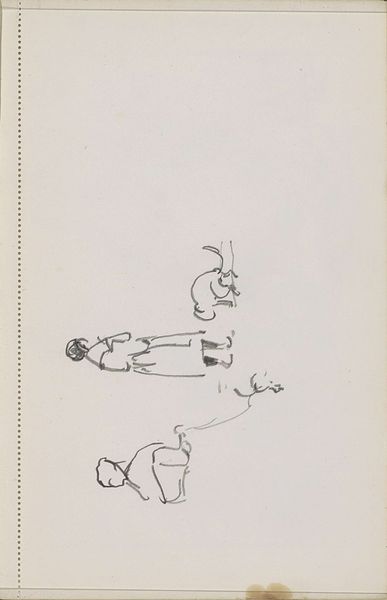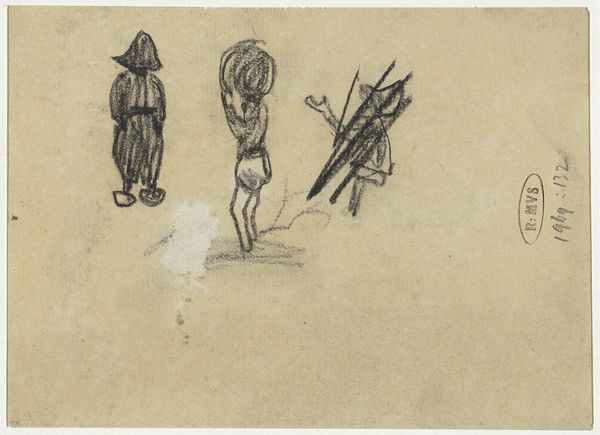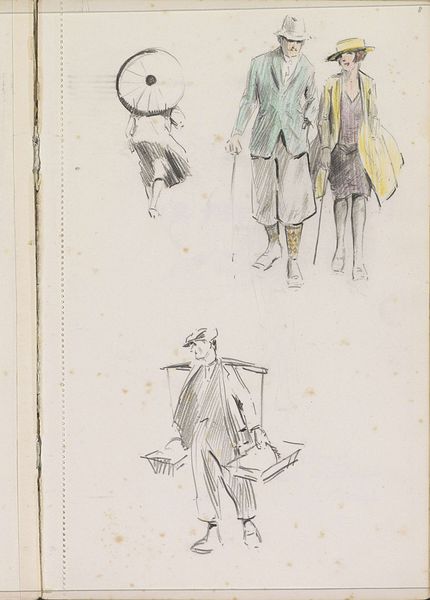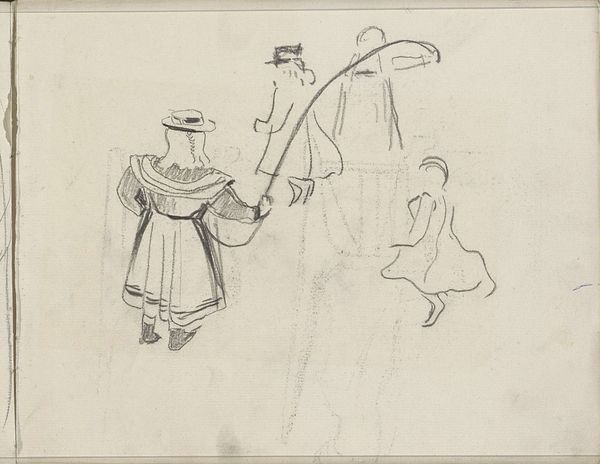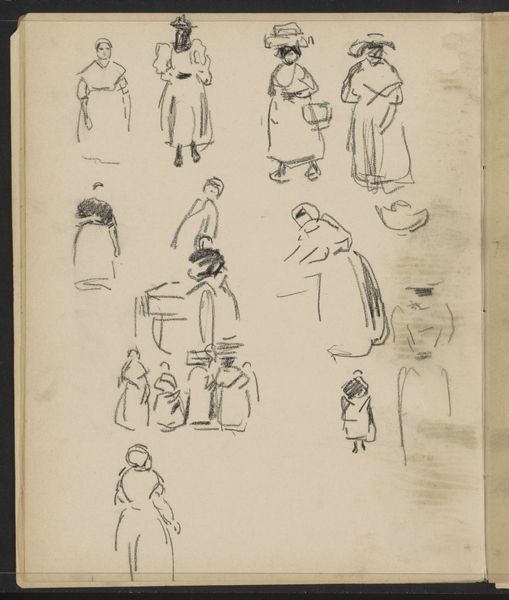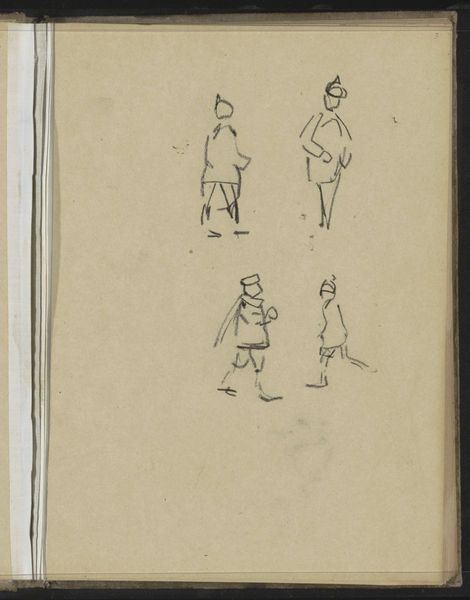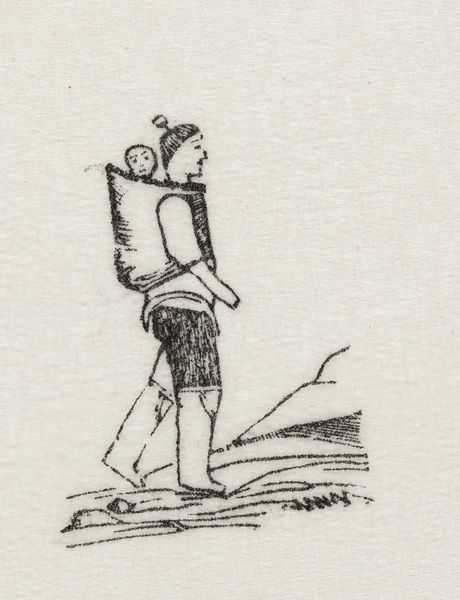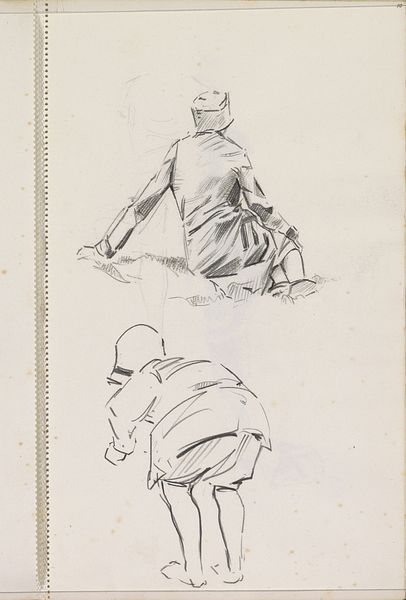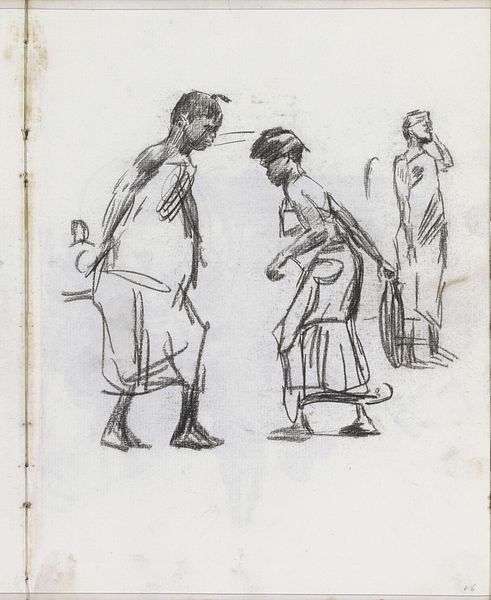
drawing, pencil
#
drawing
#
light pencil work
#
quirky sketch
#
sketch book
#
figuration
#
personal sketchbook
#
idea generation sketch
#
ink drawing experimentation
#
sketch
#
pen-ink sketch
#
pencil
#
sketchbook drawing
#
genre-painting
#
storyboard and sketchbook work
#
sketchbook art
#
realism
Dimensions: height 158 mm, width 115 mm
Copyright: Rijks Museum: Open Domain
Editor: Here we have "Sketches of Women with a Basket on their Backs" by Theo Nieuwenhuis, made sometime between 1876 and 1951, a drawing held at the Rijksmuseum. The figures look weighed down. How do you interpret this work? Curator: I see more than just a depiction of physical labor. Consider the period - late 19th to mid 20th century. This drawing opens a dialogue about women's roles, particularly within working-class communities. The baskets, rendered with such emphasis, symbolize the burdens women carried, not just physically, but also socially and economically. What do you notice about the way the women's faces are obscured? Editor: I didn't think about that initially. They're featureless, anonymous almost. Curator: Exactly. That anonymity speaks volumes. It could be read as a critique of the systemic erasure of women's individual identities within a patriarchal structure. The act of carrying—what does that signify in feminist theory? Consider their postures, too; bowed, suggesting a resignation to their circumstances, a common depiction of women during that period. But is there also a quiet resilience there? Editor: I think so. There's a certain strength implied, despite the downcast figures. Like they’re getting on with their lives regardless. Curator: Precisely. These sketches, then, invite us to contemplate the complexities of womanhood, labor, and representation. What are your thoughts now on its cultural impact and symbolism? Editor: This shifted my perspective quite a bit. Seeing it now within a broader framework of women’s labor really highlights a dialogue on gender, representation, and socio-economic conditions. It’s powerful to think about. Curator: Agreed. And this highlights the importance of intersectional approaches when engaging with art history, acknowledging the social and cultural layers of art’s function beyond its mere artistic creation.
Comments
No comments
Be the first to comment and join the conversation on the ultimate creative platform.
